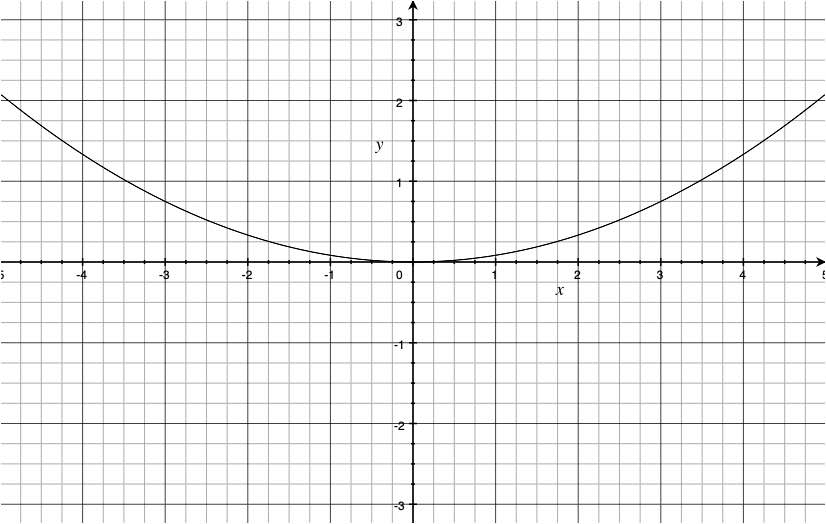As soon as you begin delving into the nuts and bolts of storytelling, one of the first concepts you encounter is Character Arc.
It is a sort of path the main characters (and the other ones as well) undergo throughout the story, because there aren’t many certainties in storytelling, but one of them is that things have to move around. And, as they move, they change.
Following what I already did with the quest for the perfect draft, I imagined the function describing the character arc. I have to admit that at first, I imagined it as a very wide parabola with a<0, like the one in the following.

This is the first function coming to mind if I think about the character arc, but the more I think about it, the more I think it’s wrong. Or inaccurate, at least. Because before we choose a function that represents our character arc, we must define what’s on the y axis. Tension? Happiness? Wealth? A combination of them?
And of course, depending on the y we choose, the function describing it and the corresponding plot will be different.
Let’s say we stumble upon a universal way to measure some “wellness” of a character. A function like the one in Figure 1 would mean that the character is on some ascending path up to the midpoint, then things get rough and they go back to the starting point (if they’re lucky). This is not what we usually want for a character we care about, but it can make for a good story. After reading The Write Practice by Joe Bunting I identify it with Icarus, the greek boy who attached wings to himself to fly away but got too close to the Sun, and the wax holding his wings together melted away.
The more I think about it, though, the more I think that this kind of function is also a good one when we want to describe a villain: someone who gains more and more power up to the point they seem invincible, but then (because of their refusal to “grow up”) they get outwitted by the hero.

If we reverse the function, instead, (meaning that we change the sign to the a coefficient) we get an arc that seems more suited to the protagonist (because we usually root for them): things get worse and worse until the hero finds a way to turn their fate for the better and begins his ascent.
But shouldn’t a positive hero (I’m willingly leaving out Icarus and Dorian Gray here) be always improving, no matter what? Let’s see.

If we use such a function, in my opinion, the hero gets boring quite soon, and consequently the story. We need some bump in the road to make us wonder whether the hero will be able to change for the better or not. So, we need a not monotonically increasing function, something with a few local maxima and minima to represent peaks and valleys in the character evolution.
And what about the villain? Does it evolve across the story?
One of the main differences between hero and villain is that the hero is capable of changing, while the villain is not. So in this case, a flat curve or a slightly negative slope will fit the villain “arc” most of the times. Why most of the times and not every time? Because some writer are a bit more forgiving than me towards villains, and like a bit of redemption for them.
Darth Vader betraying Emperor Palpatine is crucial for the Empire to be defeated for good (I’ll pretend Episodes VII, VII, and IX never happened, especially IX). Even though Darth Vader is not widely accepted as a full villain, but is considered more as a henchman, he’s supposed to be one of the big baddies of the story, and thus to have a flat or negative arc. Instead, he finally does the right thing and the Universe is safe. It’s such a bummer that he dies right after, but maybe, to have him face the consequences of what he’s done in his entire life, another trilogy wouldn’t be enough.
Be First to Comment